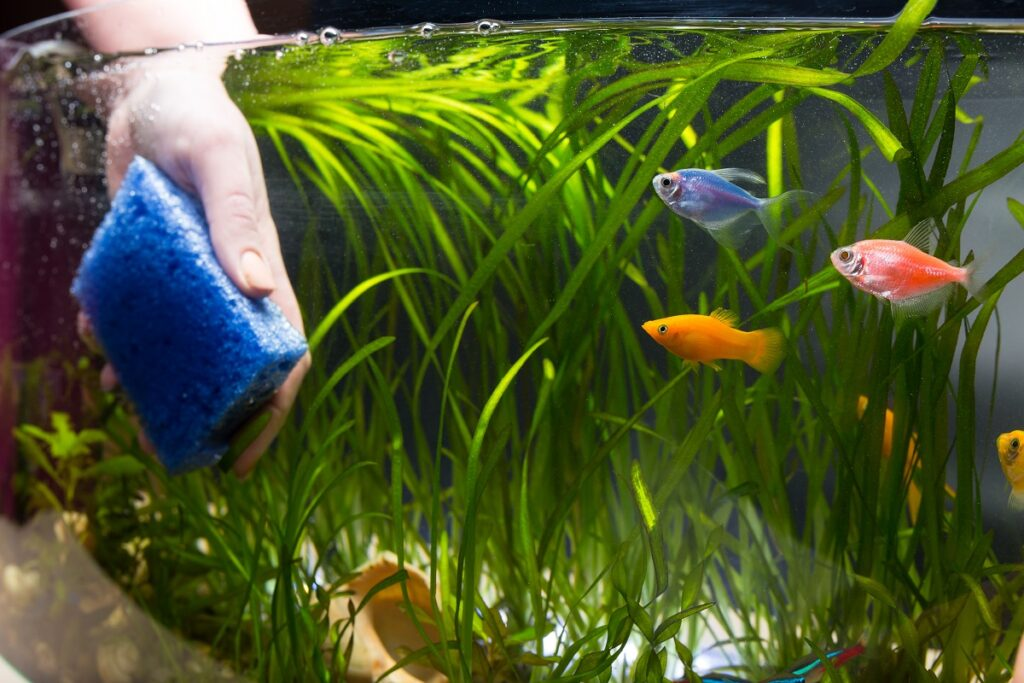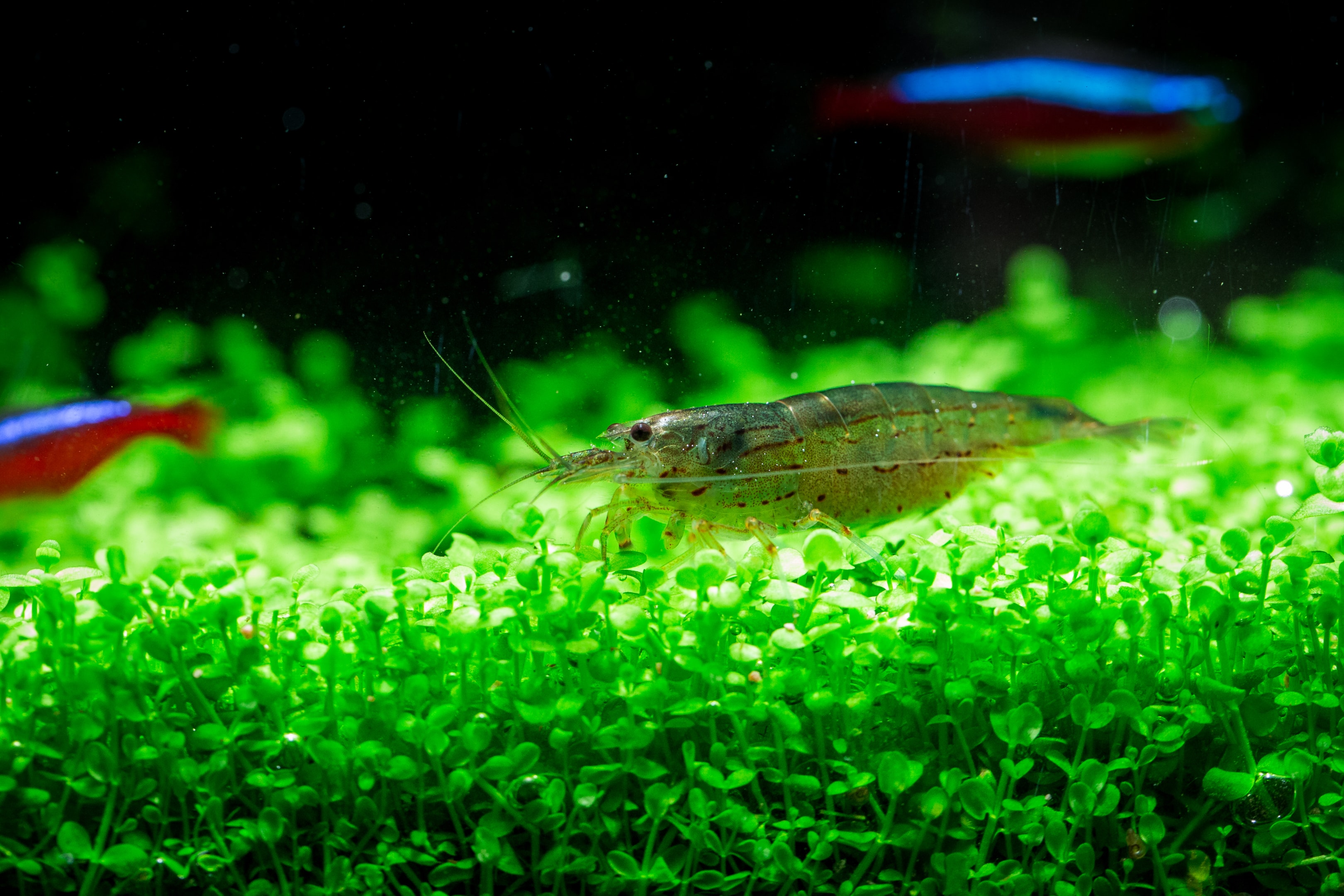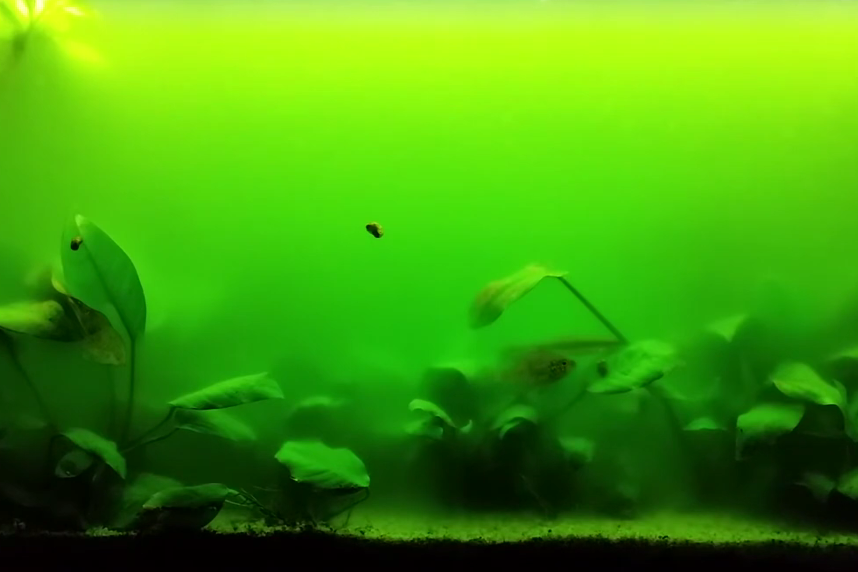How to control hair algae
Hair algae is a common issue faced by aquarium enthusiasts, known for its long, stringy appearance that can quickly take over a tank. Often referred to as algae hair, this persistent nuisance can detract from the beauty of your aquarium and negatively impact the health of its inhabitants. Understanding how to effectively manage hair algae is crucial for maintaining a vibrant and healthy aquatic environment.
In this article, we will explore the best way to control algae in tank settings, providing you with practical tips and strategies to manage this challenge. From identifying the causes of hair algae growth to effective removal techniques, we'll cover everything you need to know, including how to get rid of green hair algae in your aquarium efficiently.
Understanding Hair Algae
Hair algae are a type of green algae that thrive in aquariums with excess nutrients, particularly nitrates and phosphates. These filamentous algae can grow rapidly, forming dense mats that can smother plants and create an unsightly mess in your tank. Understanding the biology and behavior of hair algae is the first step in tackling this common problem.
Several species of hair algae exist, but they all share similar growth patterns. They typically appear as long, hair-like strands that can vary in color from light green to dark green. Recognizing these characteristics will help you identify hair algae early and take action before it becomes overwhelming. Knowing the signs of a hair algae outbreak is essential for timely hair algae removal.

Causes of Hair Algae Growth
Several factors contribute to the proliferation of hair algae in aquariums. One of the primary causes is an excess of nutrients, often stemming from overfeeding fish or inadequate maintenance practices. When nutrient levels, particularly nitrates and phosphates, rise, it creates an environment conducive to algae growth. Identifying these underlying issues is vital for effective algae management.
Another significant factor is inadequate water circulation and lighting conditions. Poor water flow can lead to localized areas of stagnant water, promoting algae growth. Additionally, excessive lighting can stimulate algae to grow faster than plants. Understanding these causes is crucial for implementing effective fish tank algae control measures and preventing future outbreaks.
Preventive Measures
Preventing hair algae from establishing in your aquarium is essential for long-term success. The first step is to maintain a consistent cleaning routine, including regular water changes and substrate vacuuming. By removing organic debris and detritus, you can reduce the nutrient load in your tank and create a less favorable environment for algae growth.
Another effective preventive measure involves monitoring your feeding practices. Overfeeding can lead to excess nutrients in the water, fueling algae blooms. By carefully managing the amount of food given to your fish and ensuring it is consumed quickly, you can help maintain balanced nutrient levels. Implementing these strategies will significantly reduce the likelihood of hair algae infestations and contribute to a healthier aquarium overall.

Adjusting Light Levels
Artificial lighting plays a crucial role in controlling hair algae growth in your aquarium. Many aquarium enthusiasts often overlook the impact of light duration and intensity on algae proliferation. Excessive light can stimulate the growth of green hair algae and other algae species, overshadowing the health of your aquarium plants. By carefully adjusting the light levels in your tank, you can create a more balanced environment that favours plant growth while suppressing algae development.
To effectively manage light levels, aim for a lighting duration of 8 to 10 hours per day. This duration supports photosynthesis in healthy plants without providing excessive energy for algae growth. Additionally, consider using timers to ensure consistent lighting schedules. If you notice an increase in green hair algae, it may be time to reduce the intensity of your lighting or consider switching to LED bulbs designed for plant growth. Properly managing light levels can significantly reduce the incidence of hair algae and promote thriving plants in your aquarium.

Nutrient Control
Controlling nutrients is vital for preventing and managing hair algae outbreaks in your aquarium. Excess nutrients, particularly nitrates and phosphates, contribute to the growth of green hair algae. To maintain a healthy balance in your tank, test your aquarium water regularly for nutrient levels. If you find elevated nitrates, consider implementing preventative measures, such as reducing feeding, increasing water changes, and ensuring proper filtration.
In addition to monitoring nutrient levels, you can enhance the plant growth in your aquarium to compete with hair algae. Healthy plants absorb excess nutrients, making it harder for algae to thrive. Consider adding fast-growing plants that can outcompete algae for available resources. Some effective choices include snails, floating plants, or carpeting plants, which can help control the nutrients in your tank. By prioritising nutrient control, you can significantly reduce the likelihood of hair algae infestations.

CO2 Injection and Its Role
CO2 injection is a powerful tool in controlling hair algae while promoting healthy plant growth in your aquarium. When CO2 levels are optimized, plants can thrive, leading to increased photosynthesis and nutrient uptake. This not only enhances the vigor of your aquarium plants but also helps to outcompete green hair algae for available resources, thereby limiting its growth. A well-balanced CO2 system fosters an environment where plants flourish, which is crucial for managing algae.
Incorporating CO2 into your aquarium can be particularly effective if you are experiencing persistent hair algae issues. As plants grow stronger and healthier, they create a natural barrier against algae species by utilising the nutrients that would otherwise fuel algae growth. This balance is essential for controlling hair algae, making CO2 injection a valuable strategy for maintaining a beautiful and healthy aquarium environment.
Beneficial Bacteria and Fungi
Introducing beneficial bacteria and fungi into your aquarium can significantly assist in controlling hair algae. These microorganisms help break down organic matter, reducing the buildup of nutrients that can lead to green hair algae outbreaks. They play a vital role in establishing a healthy biological filter that processes waste efficiently, keeping your aquarium water cleaner and less hospitable for algae growth.
To promote beneficial bacteria, consider adding products that contain live cultures to your tank. Additionally, using natural substrates and rocks that harbour these organisms can enhance their presence. Healthy plant growth is also supported by beneficial bacteria, which improves nutrient cycling in the aquarium. This synergy between plants and microorganisms is critical for controlling hair algae and fostering a thriving aquatic ecosystem.
Live Plants and Their Impact
Incorporating live plants into your aquarium is one of the most effective strategies for controlling hair algae. Healthy plants not only enhance the aesthetics of your fish tank but also compete directly with green hair algae for nutrients. When you have a thriving population of plants, they absorb excess nitrates and phosphates from the water, which are primary contributors to algae growth. This competition is crucial for managing algae species, as it limits the resources available for hair algae to flourish.
Choosing the right types of plants can make a significant difference in your battle against hair algae. Fast-growing species, such as hornwort, anacharis, or water sprite, can quickly establish themselves and help reduce nutrient levels in your aquarium water. Additionally, dense plant growth provides hiding spots for beneficial microorganisms that contribute to overall tank health. By fostering robust plant growth, you create an environment that is less conducive to the proliferation of hair algae.

Physical Removal Techniques
Manual removal is a straightforward approach to controlling hair algae and can be effective when done regularly. Manual removal involves physically pulling out hair algae from the aquarium, which can prevent it from spreading and taking over the tank. Using tools like tweezers, siphons, or algae scrapers makes this task easier. Regularly inspecting your aquarium and removing hair algae before it becomes a larger problem can save you time and effort in the long run.
However, relying solely on manual removal may not address the root cause of hair algae growth. While it's an essential part of your overall strategy, it should be combined with other methods such as nutrient control and promoting healthy plants. Additionally, ensure that you dispose of the removed algae properly to prevent it from re-entering the aquarium. By integrating manual removal techniques with other control measures, you can achieve a more effective and lasting solution to hair algae problems.
Chemical Treatments
When manual removal and preventive measures are not enough, chemical treatments can be a viable option for controlling hair algae in your aquarium. Algaecides are specifically formulated to target and eliminate various algae species, including green hair algae. However, it's crucial to use these chemicals judiciously, as they can also harm beneficial bacteria and plants if not applied correctly. Always read the instructions and consider the specific needs of your fish and overall aquarium ecosystem before proceeding with chemical solutions.
One effective approach is to use chemical treatments in conjunction with other methods, such as enhancing plant growth and adjusting light levels. This multi-faceted strategy can maximise the effectiveness of algaecides while minimising potential negative impacts. Additionally, you may want to consider using products that are designed to bind phosphates and nitrates in the water, thereby reducing the nutrients available for hair algae to thrive. By carefully monitoring your aquarium water parameters and selecting the right treatments, you can effectively manage hair algae without disrupting the balance of your tank.
Use of Algae Eaters
Incorporating algae eaters into your aquarium is an effective and natural way to help manage hair algae. Various species of fish and invertebrates are known for their appetite for algae, including snails, shrimp, and specific fish types like the Siamese algae eater or otocinclus. These creatures can significantly reduce the biomass of green hair algae, allowing healthy plants to thrive and improving the overall aesthetics of your tank.
When selecting algae eaters, it’s essential to consider the compatibility of the species with your existing fish and aquarium plants. Some algae eaters may grow large or become territorial, so choose species that are well-suited to your tank’s size and environment. By adding algae eaters to your setup, you not only gain an effective tool for controlling hair algae but also contribute to a diverse and dynamic aquarium ecosystem. Keeping a balanced population of algae eaters can help maintain long-term control of algae while enhancing the health and vitality of your fish tank.

Regular Maintenance Routine
Establishing a regular maintenance routine is crucial for preventing and managing hair algae in your aquarium. Consistent upkeep helps ensure a balanced environment that supports healthy plants and minimises excess nutrients that can fuel green hair algae growth. Schedule weekly tasks such as water changes, substrate cleaning, and equipment checks to maintain optimal conditions in your fish tank. Regularly testing your aquarium water for nitrates, phosphates, and other parameters will also help you identify any imbalances early.
In addition to routine maintenance, consider incorporating preventative measures such as monitoring feeding practices and ensuring proper filtration. Reducing excess feed will help keep nutrient levels in check, while regular filter cleaning prevents the buildup of organic waste. By adhering to a disciplined maintenance schedule, you create a stable environment that not only enhances plant growth but also reduces the likelihood of hair algae outbreaks. Consistency is key in maintaining a beautiful and healthy aquarium.
Conclusion
Controlling hair algae in your aquarium requires a comprehensive approach that combines various strategies for effective management. From understanding the underlying causes of hair algae growth to implementing methods such as CO2 injection, beneficial bacteria introduction, and regular maintenance routines, each element plays a crucial role. By integrating these techniques, you can create a balanced environment where healthy plants thrive, outcompeting green hair algae and ensuring a vibrant aquatic ecosystem.
Ultimately, your commitment to monitoring water quality, maintaining a diverse range of aquarium plants, and utilising algae eaters will contribute significantly to your success in managing hair algae. By being proactive and employing a multi-faceted strategy, you can enjoy a beautiful, algae-free aquarium that showcases the best of your aquatic life. Remember that every aquarium is unique, and finding the right balance will take time, patience, and experimentation.

Meet our bestseller! The Pro-Elite Series Complete Aquarium CO2 System with New Inline CO2 Diffuser!





